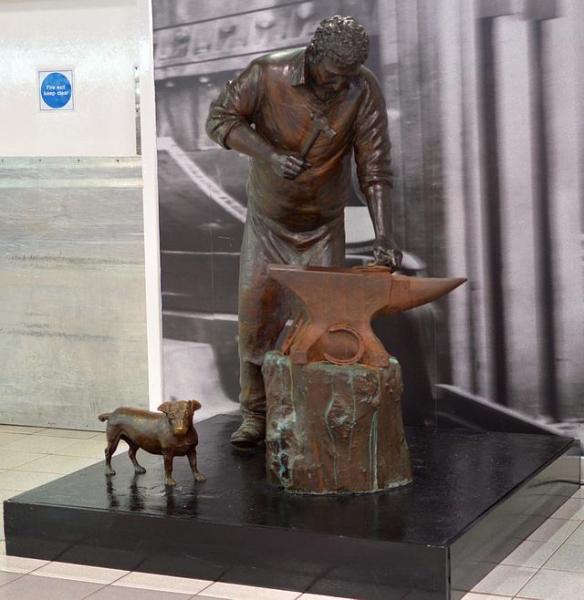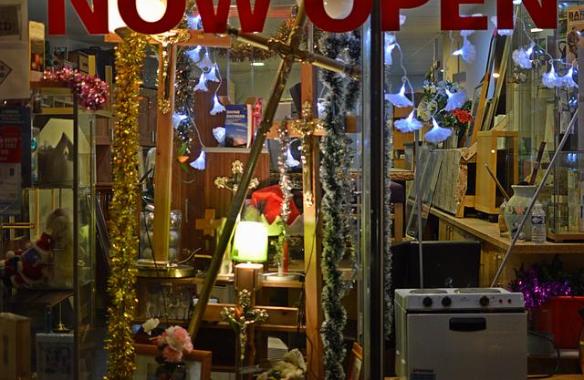I’d forgotten about this pic, taken originally as a test when evaluating a new lens.
Having had it drummed into my head that fixed lenses are so much better than zooms, the idea was to audition a 35 mm standard lens to see the difference compared to my usual zooms.
Frankly, at least for handheld working outside a studio… fixed lenses are a disaster. Something I can state after a few days of misery after trying to live with such things.
All of a sudden everywhere shrinks, and you can’t stand far enough back from anything to get it fitted into the frame.
By the same token, anything in the distance is suddenly too far away to reach.
Possibly the most irritating thing revealed by this is that the arrival of well-developed zoom designs in recent years, sensors that exceed the resolution of most lenses, and signal processing and editing that makes ‘wet’ darkroom processing look archaic, means that going fixed is really just masochism.
While there’s nothing wrong with this sculpture pic, I couldn’t get it all in frame, or would have odd geometry and distortion from tilting the lens.
With my usual zoom, I could quickly have stood at the right distance to avoid tilting the camera and introducing unnecessary distortion.
And I haven’t even touched on the lack of vibration reduction or anti-shake with many fixed lenses.
Memory fade has set in already, but I think there is an explanation of the story behind this sculpture nearby, but I haven’t been nearby since that day, so haven’t managed any reminders to help my memory along.

Forge Sculpture
Bonus test pic
This was another pic that sealed the fate of the fixed lens.
I tried taking a pic of a single windowed shop front, and below you can see as much as could capture with a ‘standard’ lens, with my back against a car parked next to the kerb.
Not even close, I’d have to go stand in traffic to capture something that I regularly photograph either from the pavement in front, or more usually by zooming in from the opposite side of the road – all in perfect safety.

Shop Window (almost)
I found another downside – the fast lens means it tends to work at wide aperture in low light, which means narrow depth of field, unless care is taken to control that before taking the shot. And there’s more. Without vibration reduction, stopping down the aperture leads to camera shake risk.
Often cited as a disadvantage by ‘armchair experts’, the smaller maximum aperture of most zooms means these problems can usually be forgotten, and take care of themselves.
